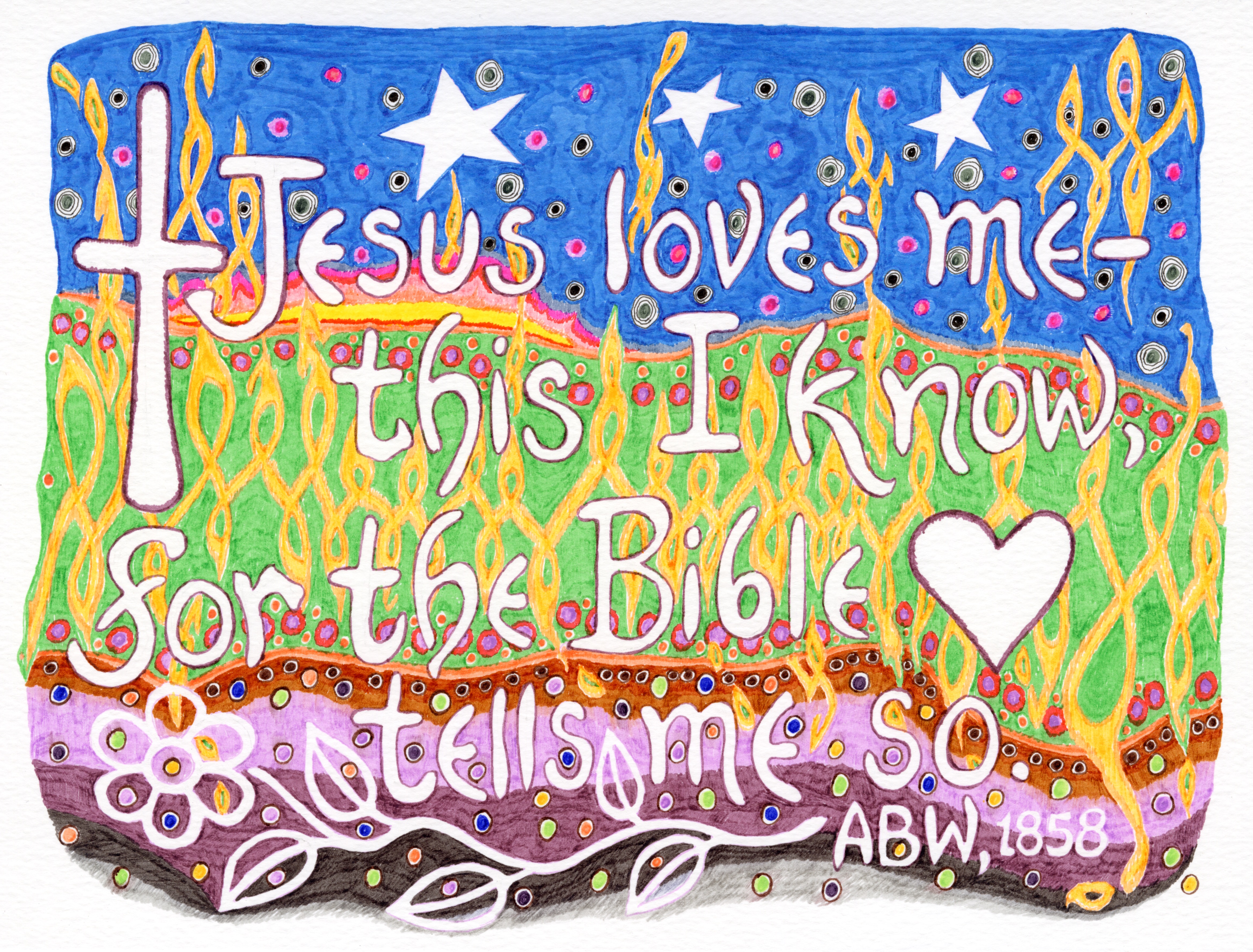Nature’s intelligent design
August 22, 2020

News of fire in the grove of towering conifers in Big Basin Redwoods State Park in August 2020 and images of smoldering red flames inside the base trunk of a beloved ancient redwood offer no comfort in Northern California’s oppressive heat and smoke of the last week. However, as a native Californian, I am optimistic nature’s intelligent design means these groves will be reborn. The ecology of the Redwoods is resiliently designed by a higher power. The thousand-plus-year-old ancient Redwoods, or “the Ancients,” have a dense fire-resistant bark that can be a foot thick. The Redwood groves hold particular significance to local California Indian tribes who harvested basket-making material from the sacred forest floors for function and ceremony. Indigenous Californian have been great stewards of the region’s natural ecology as ethnobotanists. Native Americans understand the need for planned burns to maintain groves and manage ground-level growth during long cold seasons so in times of drought, there is no excessive fuel for fires.
Lightning strikes caused this fire. Nature may not be convenient to us humans who are set in our ways and live and build homes in densely wooded areas with little humility for their dominant ecology, but Nature takes care of us even in our ignorance. As the Ancients of the Redwood groves reach to the sky, branches are few near the forest floor. The Ancients as Redwood ancestors watch over the passing of generations from above. The largest redwoods seeming stand alone. When the fogs return with moisture from the nearby Pacific ocean, we may, if we watch over time, see how life is naturally renewed. In familial clusters within the redwoods, the oldest surviving trees scarred by past blazes stand in the middle, a few younger giants will support the center Ancestor, and a circle of younger trees will eventually emerge in a beautiful chain of life. Let us be hopeful and humble as nature does her best work.
Heavy bear…
March 27, 2019

design by Meredith Eliassen, 2019.
A Foo-ey kinda day…
March 6, 2019
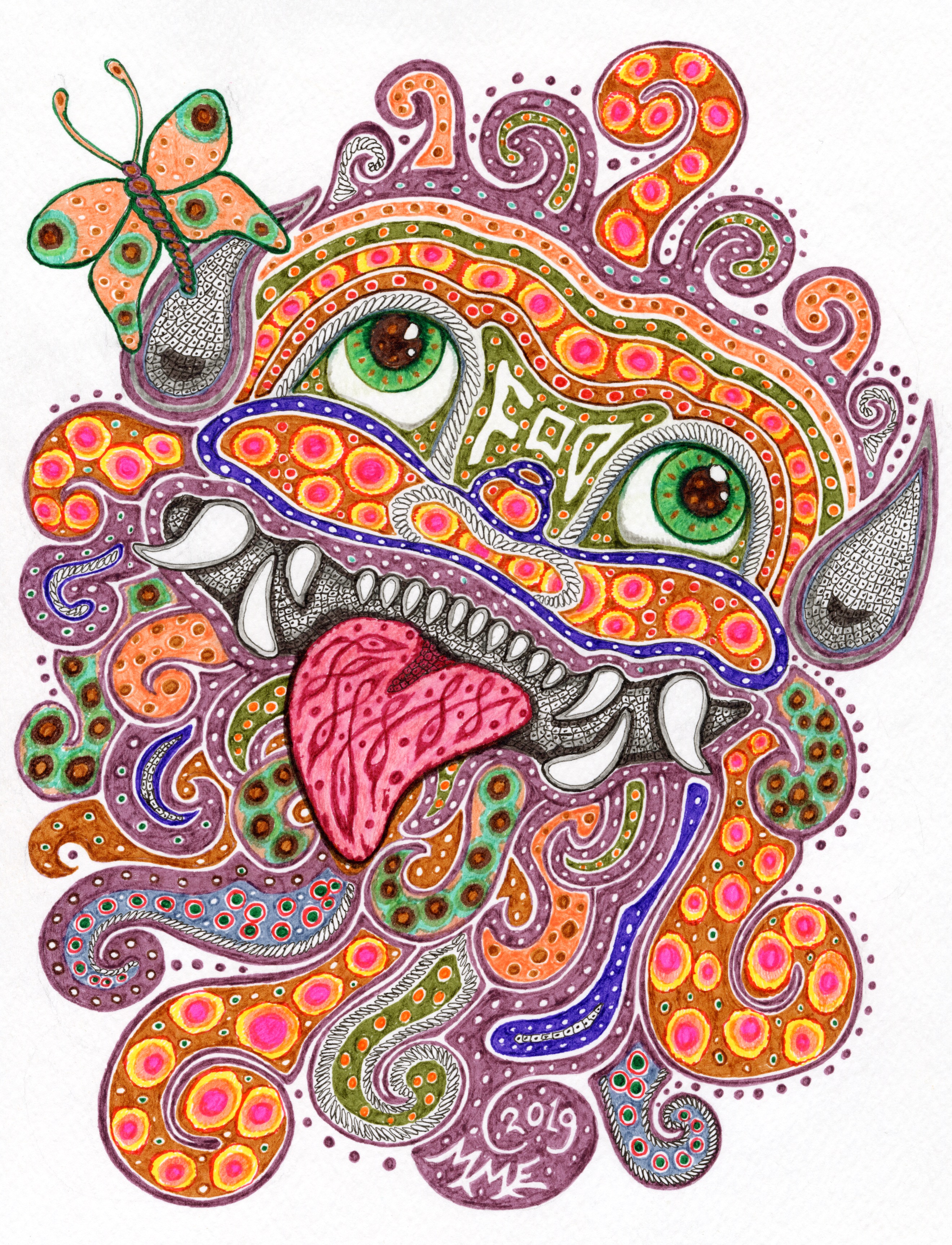
Thursday on the trail bead motif…
August 9, 2018

14 features tonal parallel intervals, design by Meredith Eliassen, 2018.

15 features experiment with intersecting color (middle mixture color) that would have been more successful using paper instead of ink; the result was too murky. According to Albers this exercise should illustrate a new deception the “fluting effect” found in a Doric column, which shows the illusion of volume. Fluting in architecture is the shallow grooves running vertically along a surface. The term typically refers to the grooves running on a column shaft or a pilaster, but need not necessarily be restricted to those two applications.

16 features trail bead motif, design by Meredith Eliassen, 2018.
Color play… trade wine bead motifs
August 8, 2018
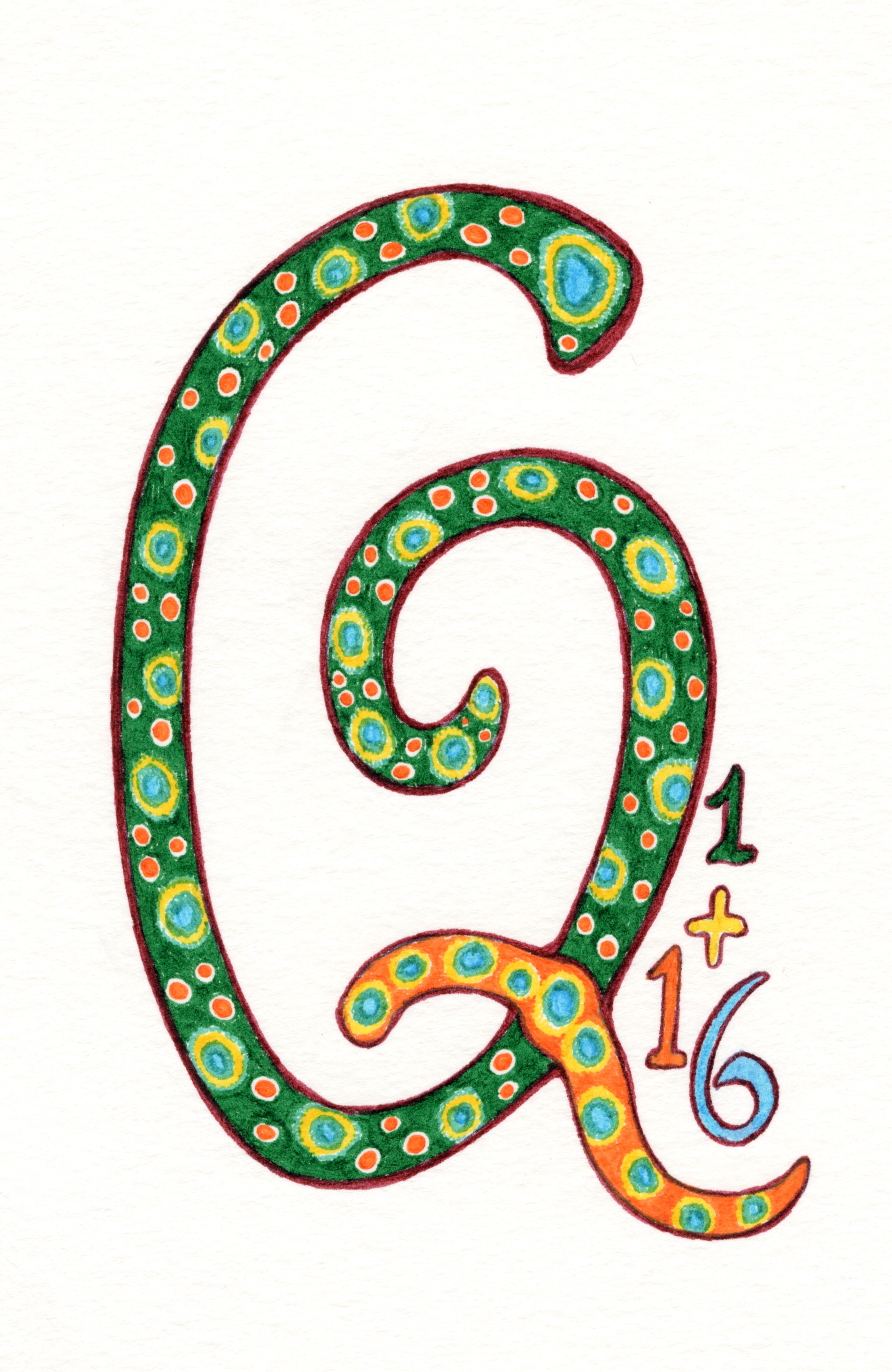
17 features letterform “Q” with eye bead motif, design by Meredith Eliassen, 2018.
Shakespeare’s ability to create linguistic imagery established a symbolic connection between the color of green and the emotion of envy, yet green is also the color of paradise… the garden… growth… and the emergence of spring:
Merchant of Venice (II,ii,108) “How all the other passions fleet to air, As doubtful thoughts, and rash-embraced despair, And shuddering fear, the green-ey’d jealousy.”
Iago in Othello (III,iii,165) “O! beware, my lord, of jealousy; It is the green-et’d monster which doth mock The meat feeds on; that cuckold lives in bliss Who, certain of his fate, loves not his wronger; But, O! what damned minute tells he o’er Who dotes, yet doubts; suspects, yet soundly loves.”
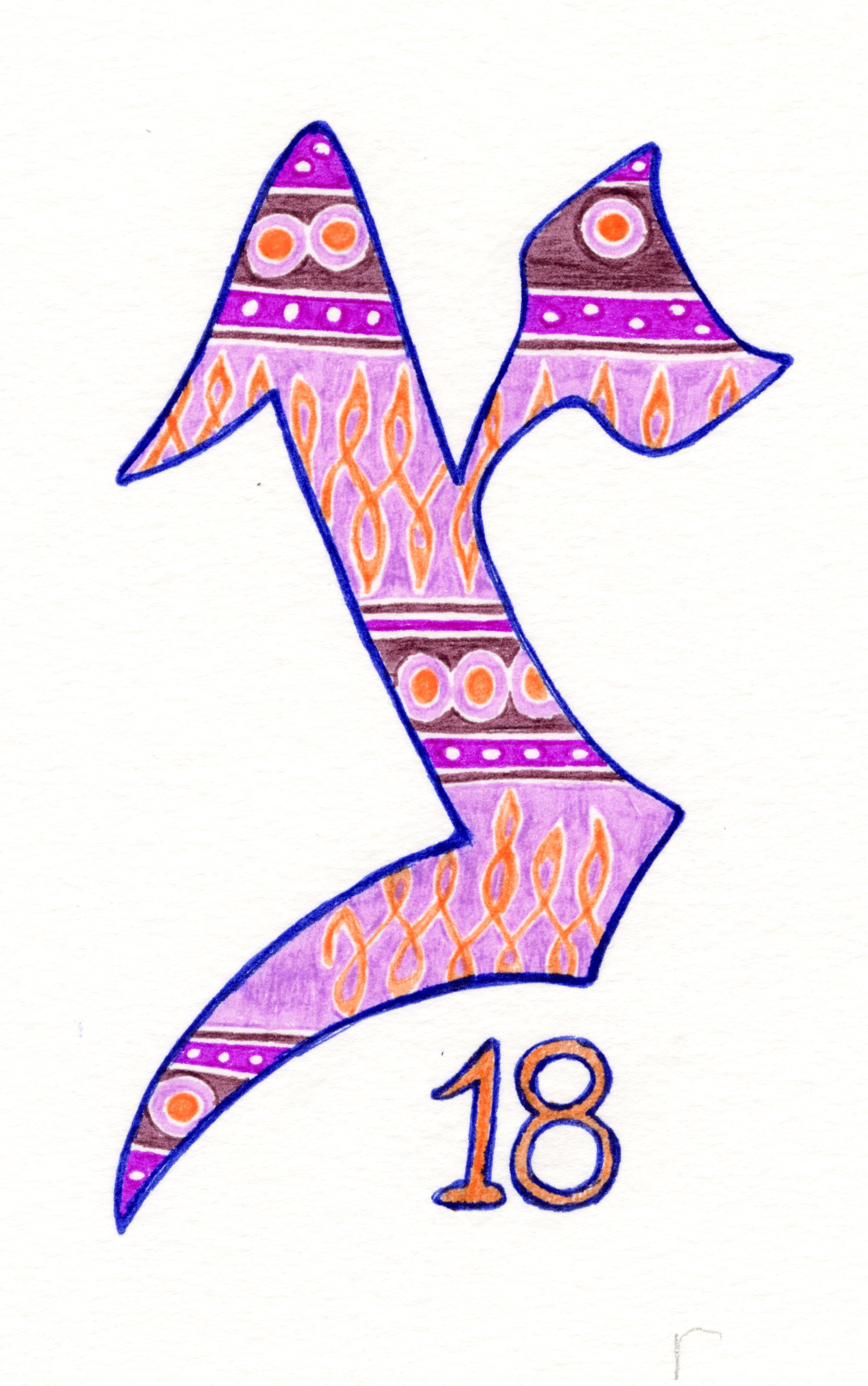
18 features Yerushalmi letterform of “tzadi” with trail bead motif, designed by Meredith Eliassen, 2018.
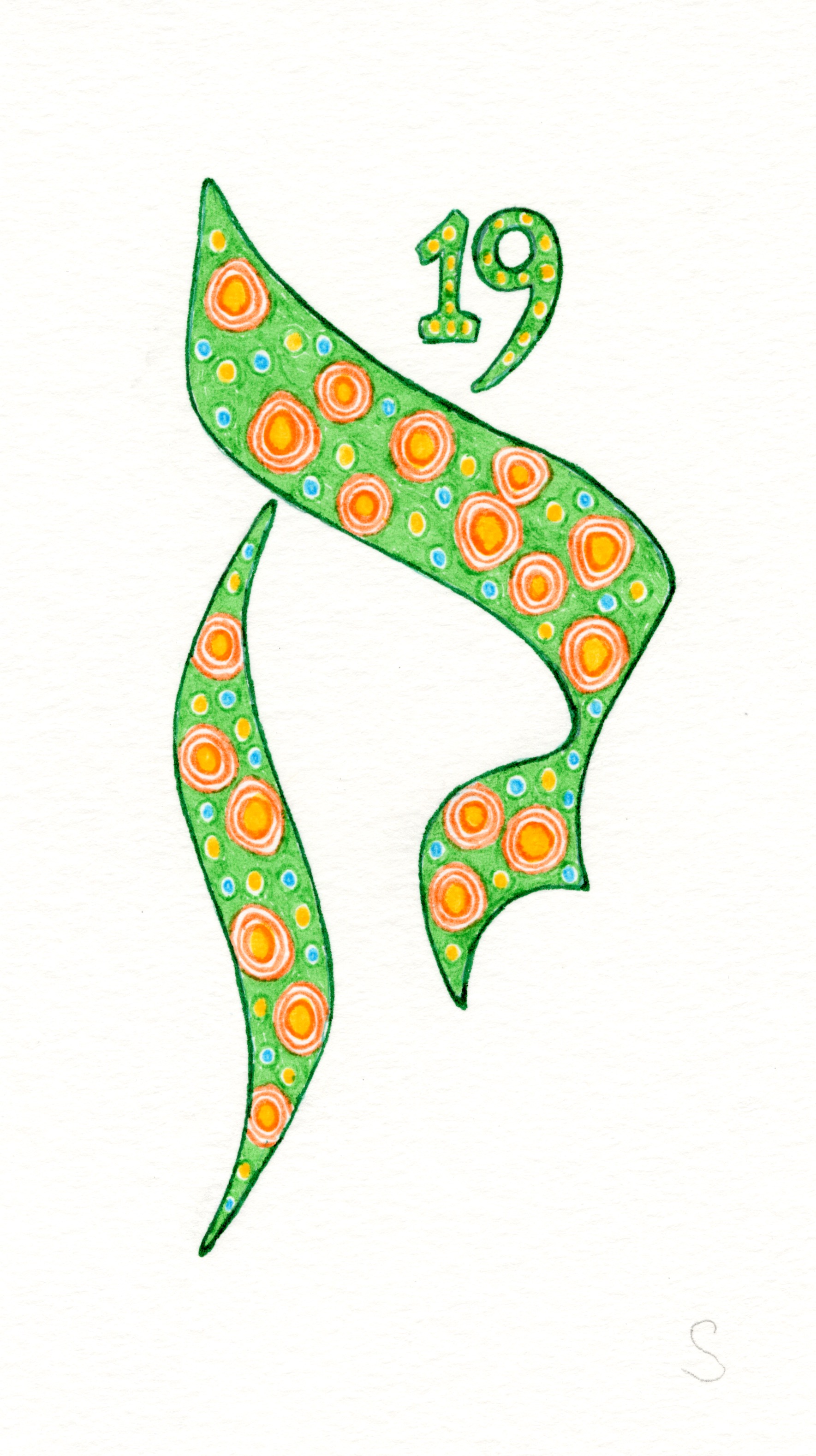
19 features Sephardi letterform of ‘kopf” with ancient eye bead designed by Meredith Eliassen, 2018.

20 features Tibetan letterform of “tsa” with ancient eye bead motif designed by Meredith Eliassen, 2018.
Introducing dragged trail bead design…
January 17, 2017

Some flow’rets of Eden ye still inherit, but the trail of the serpent is over them all.” Words by Thomas Moore from Lalla-Rookh (1817). The name Lalla Rookh or Lala-Rukh means “tulip cheeked” and is an endearment frequently used in Persian poetry. Tulip design by Meredith Eliassen, 2016.
The dragged trail bead motif is a pattern on glass that is created when a contrasting color is trailed onto a base color in parallel lines then an instrument is used to drag the trail in a perpendicular direction with a combing motion. This is a feather design where the dragging alternates up and down.

Photograph of dragged trail bead.
Día de los Muertos (“Day of the Dead”)
November 2, 2016
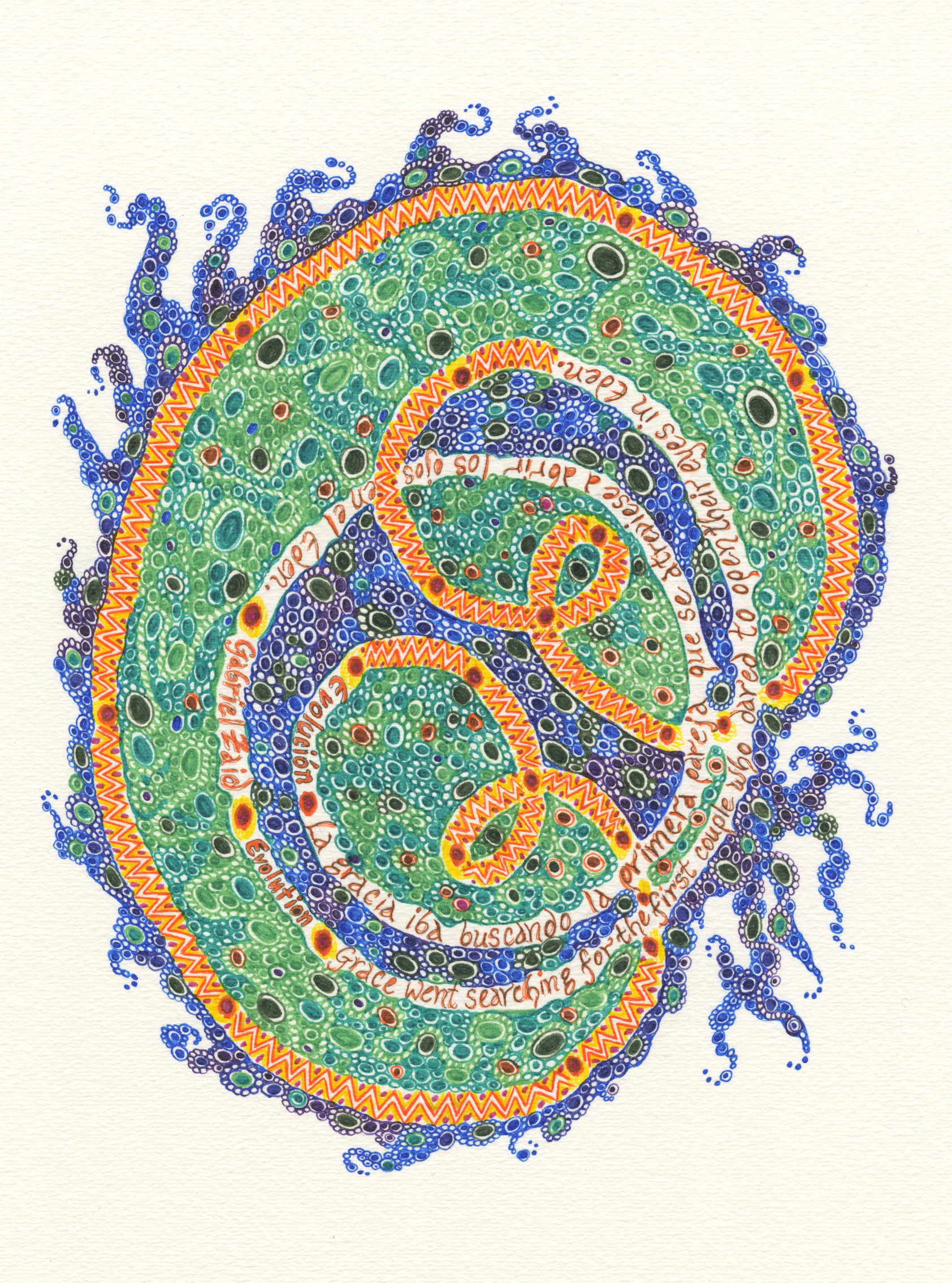
“Grace went searching for the first couple who dared to open their eyes in Eden.” Poem called “Evolution” by Gabriel Zaid and imaginary “Eden” designed by Meredith Eliassen, 2016.
Día de los Inocentes (“Day of the Innocents”)
November 1, 2016

“Create in me a clean heart, O God; and renew a right heart within me.” Words from Psalms 51: 10, design by Meredith Eliassen, 2016.
